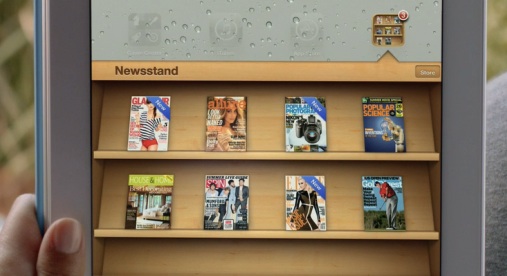
After two days of near continuous bombardment of new tendencies, a cornucopia of packed and insightful seminars and keynote speeches, (the usual) overpriced bites to eat, and “market-leading-solution-we-are-the-answer-to-all-your-problems” sales speak, I am just about to start browsing the piles of magazines and literature that I’ve amassed from the Publishing Expo as well as the TFM&A.
Having spent Tuesday and Wednesday at Earl’s Court 2 (an improvement on the slightly run-down Olympia from past years), I would like to just summarise a bit of the whirlwind of developments that the content marketing and digital publishing industry are having to take in.
Before I go into more detail, there are two glaring points about the Publishing Expo I would like to make:
1. Adobe was indeed the overall event sponsor, but I was surprised to see they were not exhibiting. Is this a sign they are getting comfortable with the lead their publishing suite, including Adobe DPS, has over the competition?
2. The iPad was the reigning tablet to showcase mobile publishing and marketing solutions. Not a single Android tablet to be seen, even in the cases of developers having solutions or working towards versions of apps for this platform.
And now on with the show…
What’s your flavour?
If the explosion of apps wasn’t concern enough for a professional trying to get their brand, creation or deliverable out there to the time-hungry and fickle world of consumers and punters, we now have the benefit (and perhaps headache) of having multiple routes we can go down in the quest for the publishing and marketing ‘silver bullet’.
The exhibitors at the show cater to different budgets and objectives, most of them squarely aimed at the tablet publishing market. Some are effective and simple (or reductive, depending on your view of things); others have a cornucopia of bells and whistles to choose from: Mag+, Readz, Dennis Publishing, Zinio, Yudu, Pressrun, Pagesuite, eMagCreator, Magazine Cloner, are examples of the different approaches used.
If I were to add to the mix the suppliers that I have come across in past exhibitions, case study presentations or on projects I have worked on, the list goes on: eDition, Onswipe, Issuu, Flipping Book, and numerous other big and small operators. In the case of Readz and Onswipe, for example, we’re not even talking about an iOS or Android app, per se, as these are nascent examples of web-based or web-optimised content browsing solutions, that are becoming a valid alternative to your ‘traditional’ platform-based application solutions.
Brave New World
All of the above-mentioned suppliers are clambering for their share of the ever-evolving and increasingly inter-woven market of ‘grabbing people’s attention and making them do something after seeing your message’. The result is that most brands, agencies or publishers can no longer lounge in the luxury of being a platform or iPad-only specialist.
For all of us with any kind of history in the communication, media, publishing or marketing industry, we are riding the tidal waves caused by the speed of change in the last few years. We are coming to realise that survival lies with a varied mix of multi-platform, integrated, attractive, informative, engaging, entertaining and easy to navigate information and content. And if we can have that with some magic pixie dust in the form of viral content, social media buzz or mass-market news exposure, then we’re one step closer to marketing zen, publishing nirvana or brand heaven.



